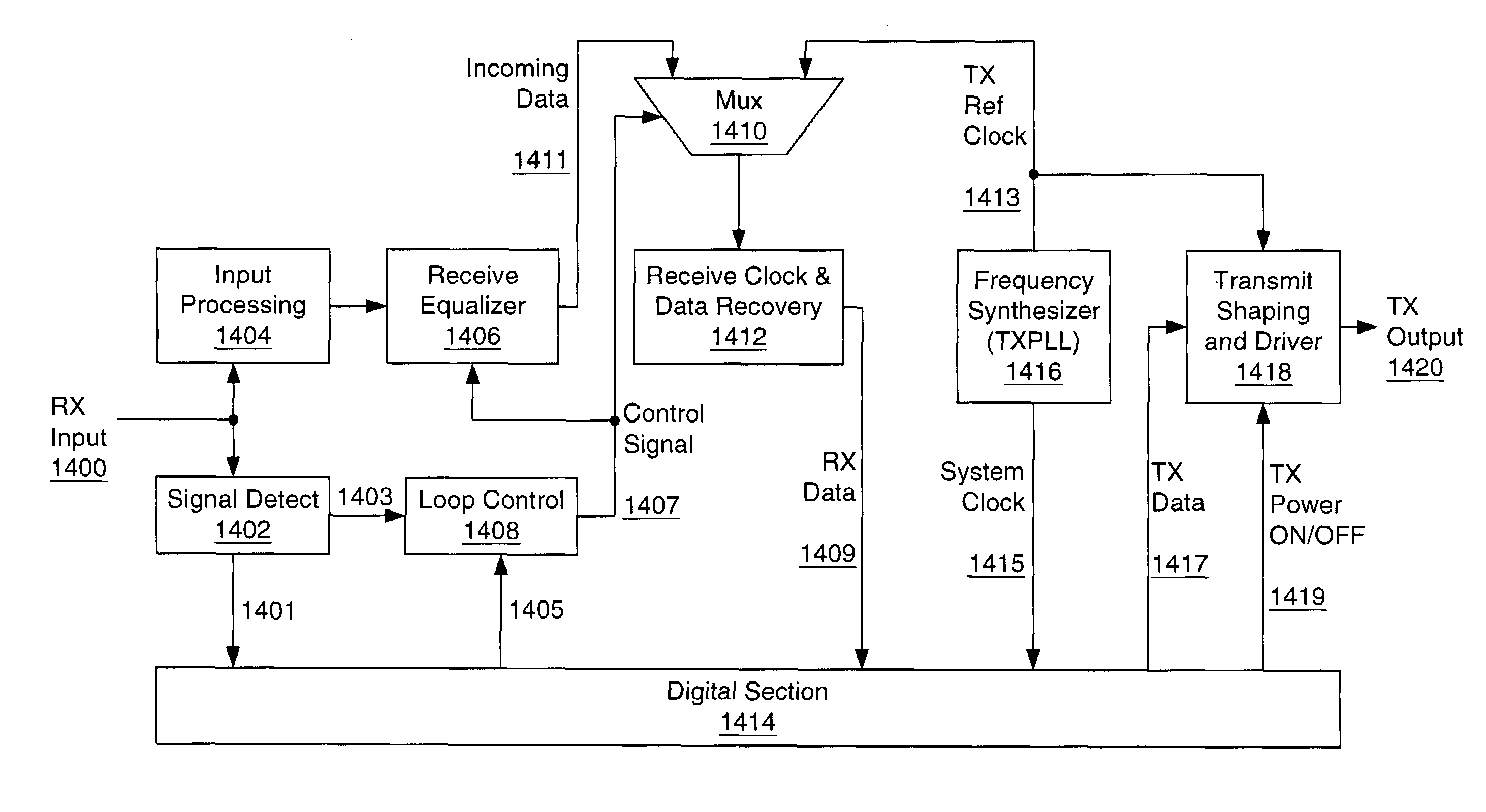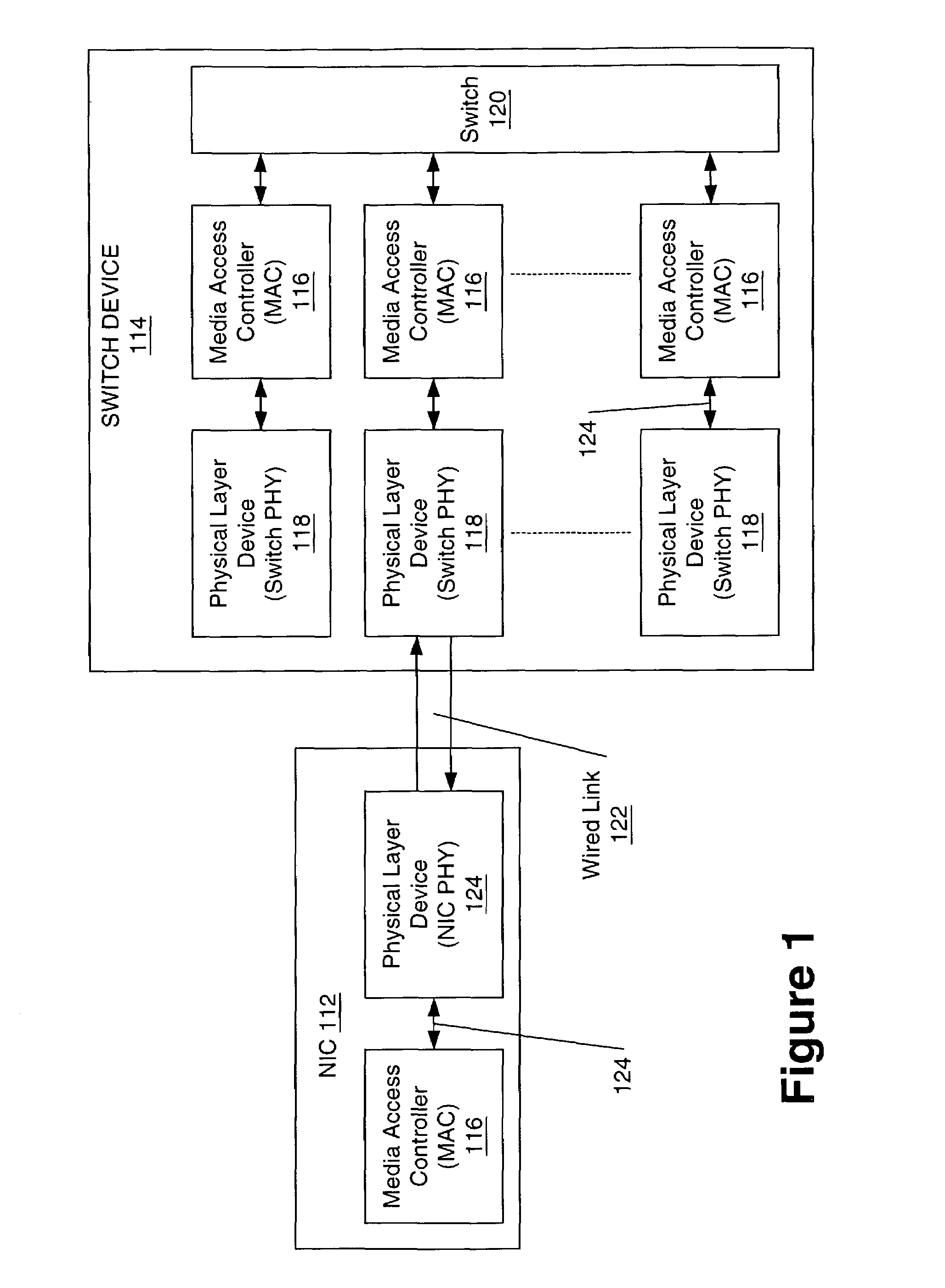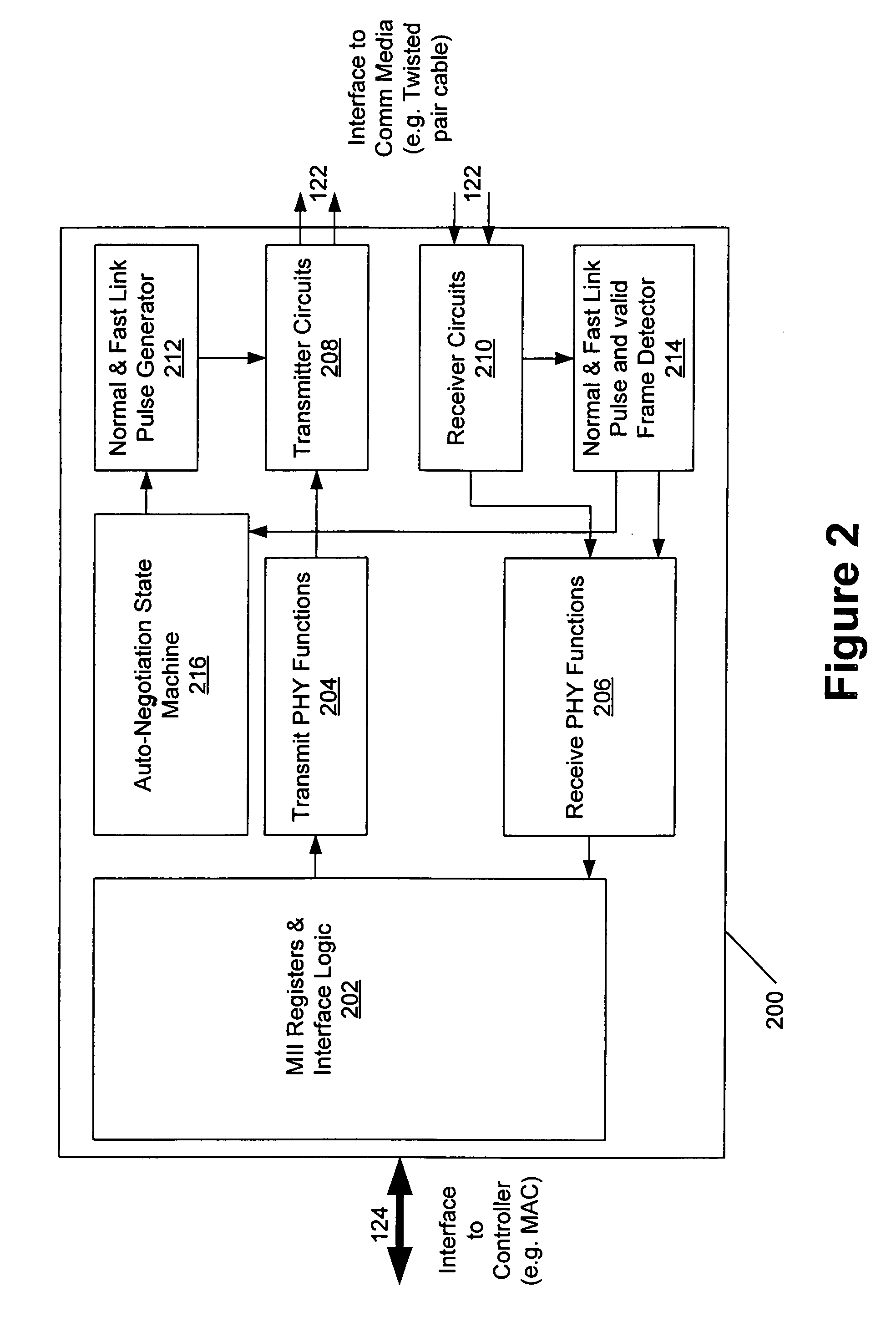Apparatus and method for freezing the states of a receiver during silent line state operation of a network device
a network device and receiver technology, applied in the field of communication links, can solve the problem that the receiver may not know the phase of incoming data immediately, and achieve the effect of reducing the power required by a lan communication link, preventing data loss, and reducing the power of the physical layer devi
- Summary
- Abstract
- Description
- Claims
- Application Information
AI Technical Summary
Benefits of technology
Problems solved by technology
Method used
Image
Examples
Embodiment Construction
[0093]The present invention is a method and apparatus for freezing the states of a receiver during silent line state operation of a network device. In the following description, numerous specific details are set forth to provide a more thorough description of the present invention. It will be apparent, however, to one skilled in the art, that the present invention may be practiced without these specific details. In other instances, well known features have not been described in detail so as not to obscure the present invention. Hereinafter, the term “system” is used to refer to a device and / or a method for performing a function. Also, hereinafter the term “network device”, “network node”, “physical layer device” or “PHY” is used to refer to a network apparatus, network device, network interface card (NIC), network node, network hub, a computer linked to a network via a network interface card, voice over Internet Protocol systems, LAN telephone systems, or refers to other devices tha...
PUM
 Login to View More
Login to View More Abstract
Description
Claims
Application Information
 Login to View More
Login to View More - R&D
- Intellectual Property
- Life Sciences
- Materials
- Tech Scout
- Unparalleled Data Quality
- Higher Quality Content
- 60% Fewer Hallucinations
Browse by: Latest US Patents, China's latest patents, Technical Efficacy Thesaurus, Application Domain, Technology Topic, Popular Technical Reports.
© 2025 PatSnap. All rights reserved.Legal|Privacy policy|Modern Slavery Act Transparency Statement|Sitemap|About US| Contact US: help@patsnap.com



